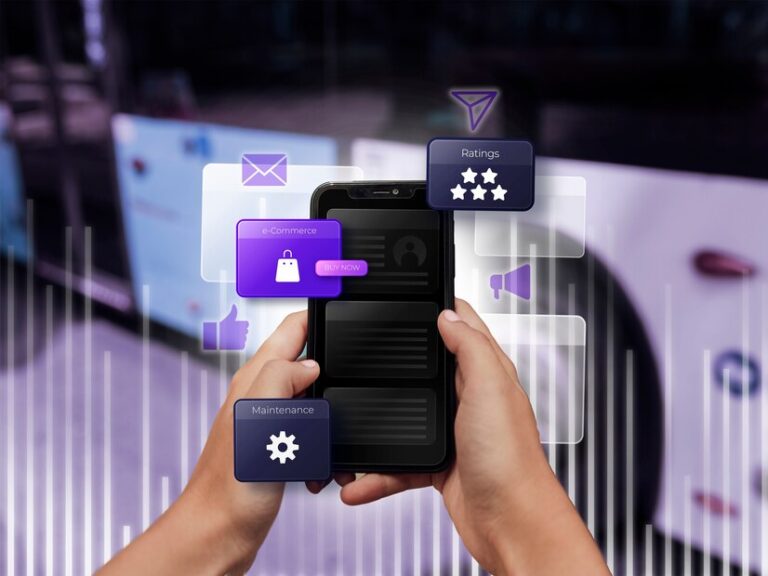In recent years, there has been a surge in interest surrounding the concept of ‘building apps without code.’ This innovative approach to application development has democratized the process, enabling a broader audience to create powerful applications without the need for extensive programming knowledge. At Insoftex, we contribute to the evolution of codeless programming through our efforts to accelerate the development process of your business.
Table of Contents
Convenience and Availability
The number one attraction of making packages without code lies in its convenience and accessibility. This approach democratizes app development, empowering individuals with various backgrounds to turn their thoughts into functional software program, shattering the barrier of technical understanding. Whether you’re a small commercial enterprise owner dreaming of streamlining your workflow, a innovative entrepreneur visualizing your subsequent large app, or an company looking for to fast-track innovation, the no-code movement gives a person-pleasant opportunity to conventional coding. With intuitive drag-and-drop interfaces and pre-constructed functionalities, the strength of creation rests in your hands, now not traces of code. So, step into the destiny of app improvement, in which imagination takes center degree and possibilities are boundless.
Features and Limitations
Comparing no-code with traditional coding methods unveils a spectrum of possibilities, each with its own strengths and constraints. No-code platforms like Wix and Webflow entice with rapid development cycles, fostering instant collaboration and streamlined deployment, perfect for building MVPs or internal tools. However, their intuitive interfaces and pre-built functionalities might feel restrictive for crafting highly customized experiences or intricate back-end logic, often the domain of traditional coding like Python or Java. Ultimately, the ideal approach hinges on the project’s complexity, budget, and desired level of control. Choosing wisely between no-code’s swiftness and traditional coding’s bespoke power empowers you to turn your vision into a reality, whether it’s a simple landing page or a complex enterprise application.
Examples of Successful Apps Built Without Code
Several successful applications have emerged from no-code platforms, demonstrating their versatility and democratizing app development. In just a few years, no-code tools have empowered creators to build robust solutions across diverse domains like e-commerce, project management, and data visualization. Imagine mobile task organizers seamlessly synchronizing with project dashboards, inventory management systems automatically updating customer order statuses, or user-friendly CRMs built without a single line of code. Platforms like Insoftex are unlocking this potential, making complex functionalities accessible to everyone, not just programmers. The future of software development is brimming with possibilities, and no-code tools are poised to be the paintbrushes in the hands of a generation of citizen developers.
Market and Future of Codeless Programming
The no-code movement is not just a passing trend; it’s a tectonic shift reshaping the landscape of software development. Its ease of use and intuitive interfaces empower anyone, not just technical elites, to bring their ideas to life, unlocking a wave of innovation previously unthinkable. Businesses are taking notice, recognizing the advantages of rapid deployment and slashed costs. This surging demand fuels explosive growth in the codeless market, with forecasts predicting a near tripling in value by 2026. As more and more businesses ditch traditional coding for the agility and accessibility of no-code platforms, the future of software development promises to be one where anyone can code, and anything can be built.
Applications for Different Sectors and Users
The impact of no-code development reverberates beyond business frontiers, empowering diverse corners of society. In bustling classrooms, no-code tools equip students to craft interactive educational games or data analysis dashboards, igniting a fire of innovation without complex syntax hurdles. Across bustling hospitals, clinicians design custom patient intake forms or medication tracking apps, streamlining workflows and freeing up precious time for patient care. No-code’s reach even extends to citizen scientists, enabling them to build data visualization tools and analyze research findings, propelling discoveries forward without needing to write a single line of code. With its democratizing magic, no-code development is weaving a new tapestry of possibility, one digital thread at a time.
Conclusion
In conclusion, the rise of building apps without code has opened new frontiers in application development. Insoftex and other forward-thinking software development companies have spearheaded the movement towards democratizing app creation through codeless programming. While this approach still carries limitations in technical complexity, its undeniable advantages in speed, affordability, and inclusivity propel it as a transformative force in the future of software development. The growing adoption of codeless tools paves the way for a future where innovative tech solutions blossom not just from seasoned coders, but from a diverse pool of creators empowered by intuitive visual interfaces and drag-and-drop logic. This democratization will undoubtedly paint the tech landscape with vibrant hues of creativity and ingenuity, fostering a more inclusive and dynamic ecosystem.

